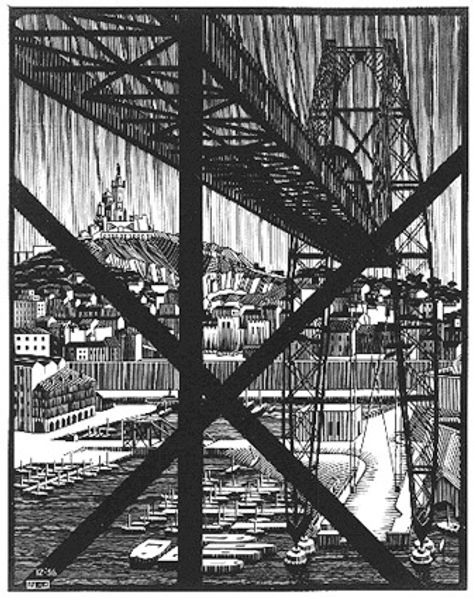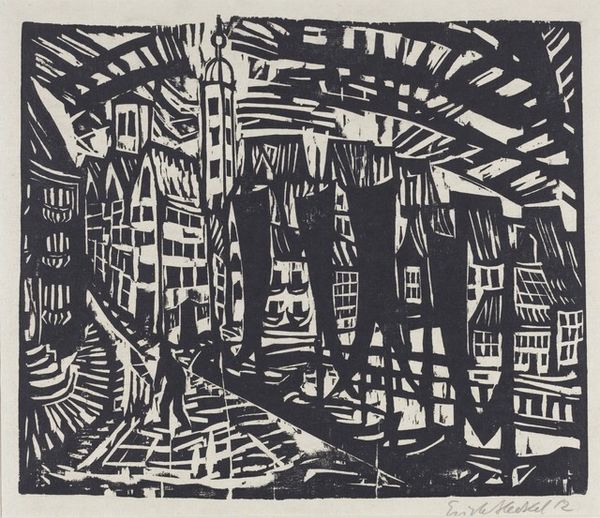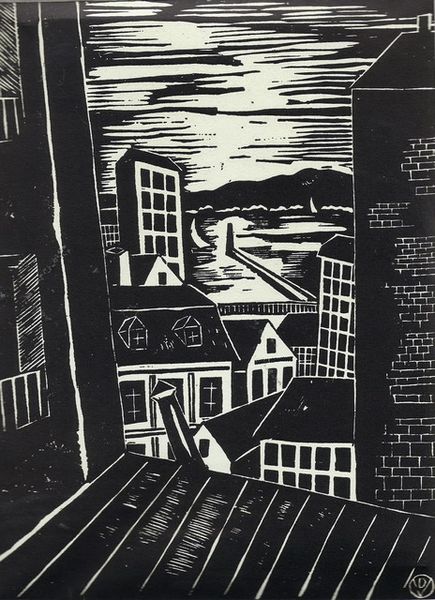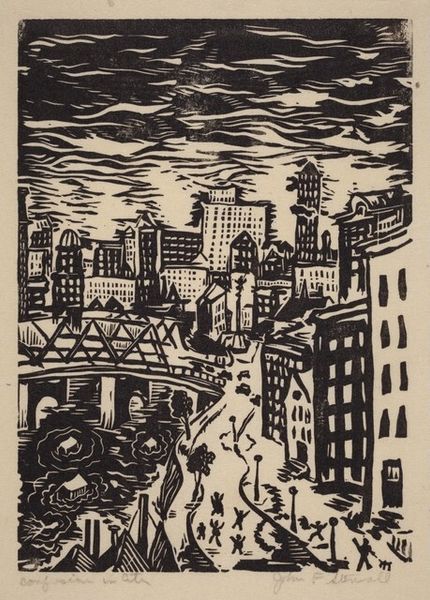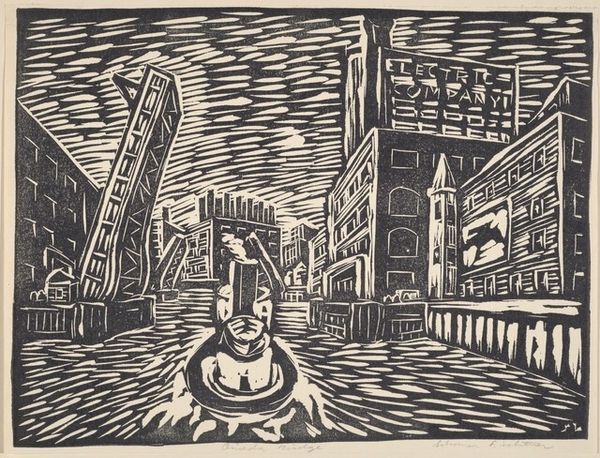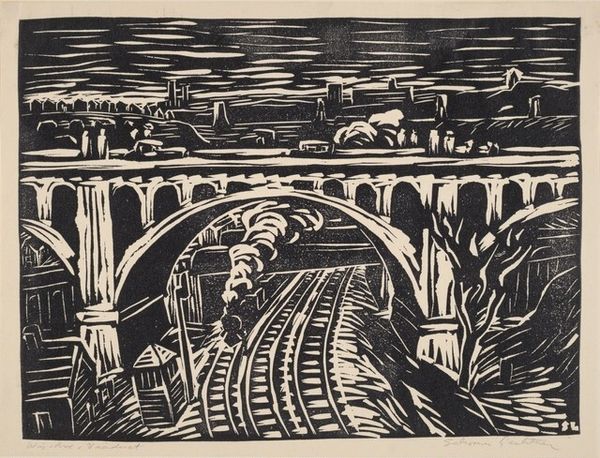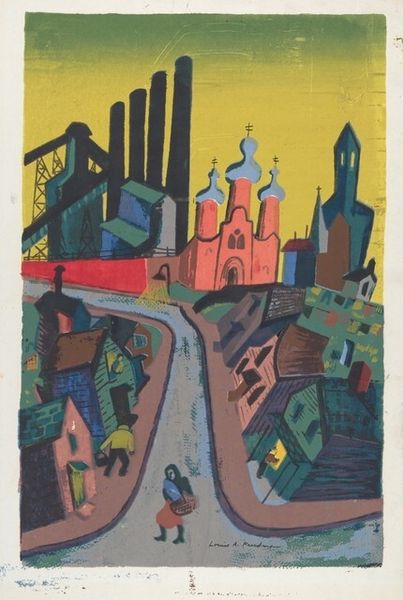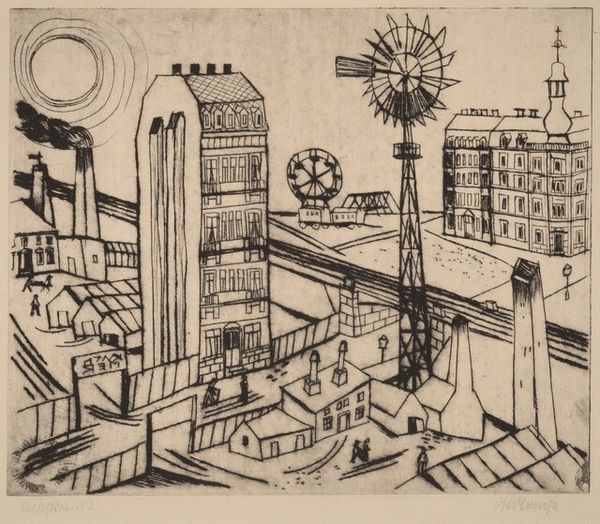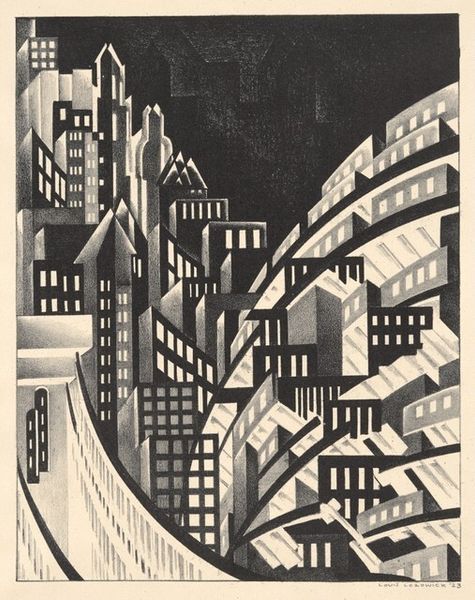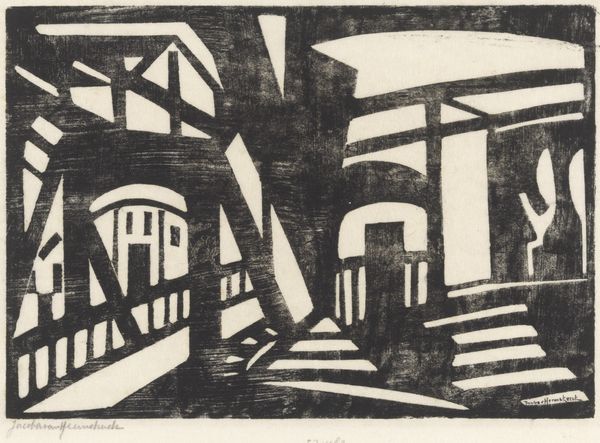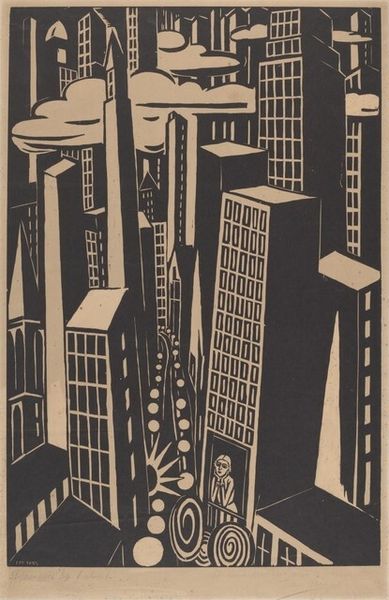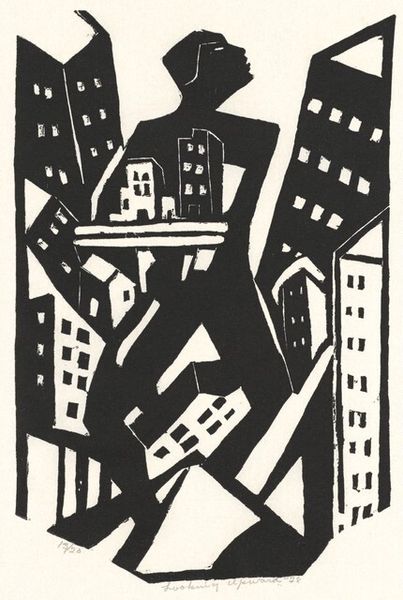
drawing, print, graphite
#
drawing
# print
#
line
#
graphite
#
cityscape
#
realism
Dimensions: Image: 295 x 468 mm Sheet: 405 x 586 mm
Copyright: National Gallery of Art: CC0 1.0
Curator: Ellen Lanyon created "Excavation" in 1954 using graphite as her primary medium. Immediately, one is struck by its architectural qualities, rendered with impressive detail and linear precision. What are your first impressions of the work? Editor: I find the density and high contrast surprisingly captivating. The interplay between black and white creates a powerful visual rhythm. I also note a certain melancholy lurking beneath the surface. Curator: Absolutely, a close inspection suggests how Lanyon positions viewers to witness post-war urban development and displacement, subtly portraying human costs in city growth. Consider the sharp angles, contrasting with the softness of the skyline; how do these juxtapositions contribute? Editor: It's true. Those severe lines create a grid-like framework that structures the cityscape but also gives it an unnerving edge. There’s very little gradation; most forms are flat planes rendered with linear hatching and cross-hatching, as you can clearly see. Curator: The sharp linework can be read in concert with wider conversations of identity, labour, and shifting social realities during the mid-20th century. These conversations undoubtedly impact working-class communities. This interplay is at once both realist and expressive. Editor: That tension is compelling. The rigid forms contrast markedly with what they represent, all those windows and roofs rendered uniformly despite obvious differences in design. It makes you wonder about semiotics and their possible discontents. Curator: Indeed. Lanyon uses abstraction and representation dialectically to critique narratives of progress and modern life. This adds complexity, forcing a dialogue between representation and a darker, unspoken narrative. Editor: Ultimately, this work highlights the artist's capacity to manipulate formal elements—line, tone, and texture—into an expression, while opening multiple avenues of seeing the world through visual cues. Curator: I find it an enduring testament to the political impact art holds in illuminating the world, provoking reflections of what city development might cost society and what the future holds.
Comments
No comments
Be the first to comment and join the conversation on the ultimate creative platform.
